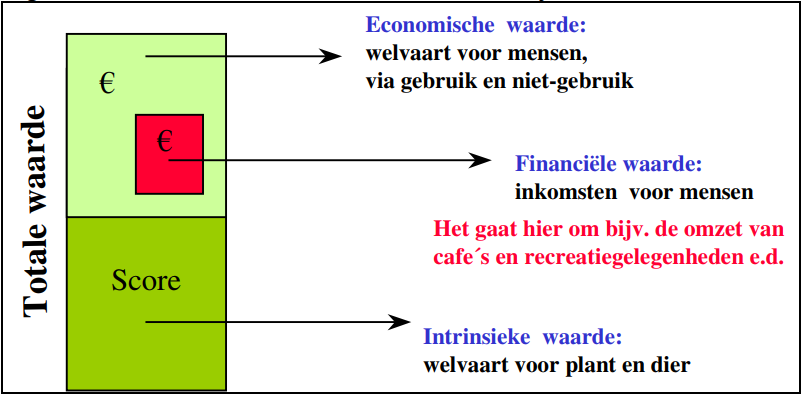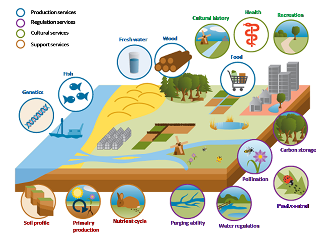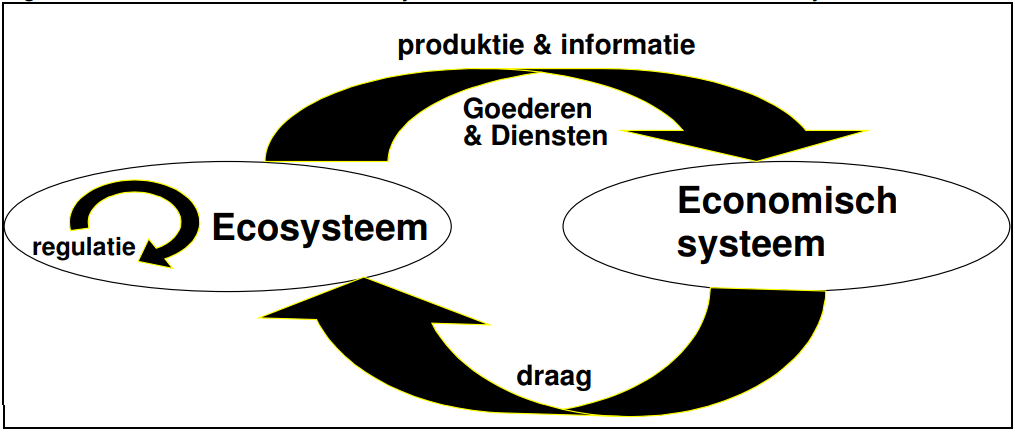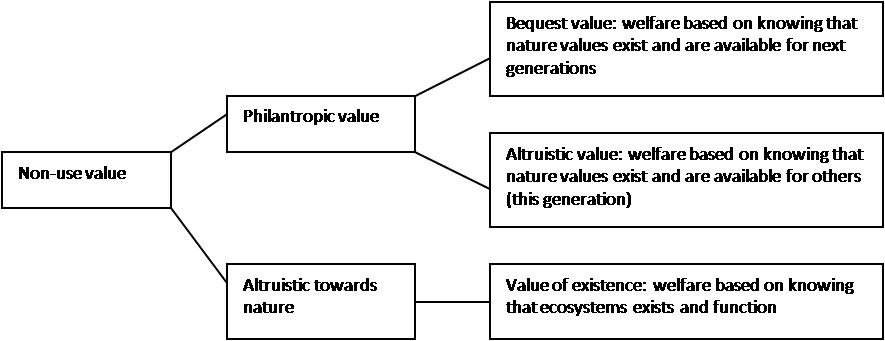About
Building with Nature concepts focus on the use of natural processes in the implementation and operation of hydraulic engineering infrastructures. Ideally, these concepts involve lower lifecycle costs in monetary terms, but this is not always the case. Often non-financial benefits like ecosystem services and biodiversity are important selling points. In fact, decision-makers should be facilitated to value BwN concepts in order to compare the BwN advantages with the additional costs that may be involved.

Valuation of the natural environment
In order to understand the way in which the benefits of the natural environment are valued, it is important to note the definition of value that is used. The economic value of ecosystems is defined as the amount of both material and immaterial forms of welfare that nature generates for society. This means that the economic value is larger than the cash flows derived from nature. These cash flows, which can be rather limited for non-exploited pristine nature areas, form the financial value. The economic value, however, also comprises all types of ecosystem services like contribution to clean water, carbon sequestration, coastal protection, recreation, etc. The broad welfare definition means that the economic value is a purely anthropocentric measurement. Economic value pertains strictly to human welfare. It does not capture intrinsic values, such as welfare for other organisms, plants and animals (Nieuwkamer, 2008). The figure shows the economic, the financial and the intrinsic value of ecosystems. Unlike the intrinsic value, the economic value of ecosystems can be expressed in monetary terms by means of several economic valuation techniques, after which it can be included in socio-economic cost benefit analyses.
Ecosystem services

Ecosystems generate human welfare because they produce goods and services that humans can use directly or indirectly (through the use of other goods or services). Examples of direct forms of use pertain to goods such as wood, clean water and fish or to services such as recreational opportunities, protection against flooding or climate change. Examples of indirect forms of use are ‘nutrient recycling’ and ‘fish nurseries’ which result in ‘clean water’ and ‘fish production’, respectively. By using the clean water or the fish, the nutrient recycling and nursery services are used indirectly. In other words: the ecosystem’s nutrient recycling and the nursery function are conditional to the production of clean water and fish. The figure shows different ecosystem services.
To capture the full value of an ecosystem it is important not to omit any goods and services that it produces. At the same time it is also important not to value indirect forms of use in addition to direct ones, as this leads to double-counting. A way to solve the problem of potential under- and overestimation is to make a distinction between goods and services that people can directly use, and conditional functions that generate welfare only indirectly. The latter should be linked explicitly and systematically to the former. To make this clear, we shall take one step back and consider the original ‘functions of nature approach’.

Functions of nature approach
The functions of nature approach, which distinguishes production, information, regulation and carrier functions, was originally developed by ecologists to identify the substance and energy flows between the ecosystem and the economic system (e.g. van der Maarel and Dauvellier, 1978). The approach was immediately applied by both ecologists and economist to determine the economic value of ecosystems (van Holst et.al, 1978; Gren et.al, 1994, de Groot, 1992; Costanza et.al, 1997), even though it was not meant for this purpose.
In the figure the different categories of functions are represented by arrows pointing in different directions. The production and information functions reflect a flow from the ecosystem to the economic system. They form the supply of goods (production) and services (information) from which humans directly derive welfare when using or not-using it. These are the welfare flows that we are searching for when trying to determine the economic value of ecosystems. Carrier functions represent an opposite flow from the economic system to the ecosystems. Humans put houses, waste, roads etc. into the ecosystem. These functions should not be included in ecosystem valuation studies, because they lead to overestimates. The space that ecosystems provide ultimately carries all human activities, which makes the ecosystems´ value equal to the value of all human activities. In situations where we would like to compare the benefits of ecosystems with the benefits of economic activities in order to choose between the two, this is not very helpful. If, for example, one needs to decide on whether or not to build a road through a nature area, one would like to compare the benefits of the road with the costs of losing the nature area. If the benefits of carrying a road are attributed to the nature area, than the costs of loosing nature will always be exactly equal to the benefits of the road, leaving the matter undecided.
Regulation functions are flows inside the ecosystem and are represented by an arrow inside the ecosystem. They are the processes and characteristics that make the carrying of activities and the production of goods and services possible. Originally, they were also called conditional functions (Harms, 1973). Including these conditional functions in addition to goods and services (i.e. production and information functions) is the major cause of overestimates in valuation studies.
Conditional functions such as pollination, nutrient recycling, nurseries, carbon sequestration etc. only indirectly generate welfare since they lead to respectively food production, clean water, fish production and protection against the effects of climate change. This means that if both the pollination and the food production, or both the nursery and the fish are being valued and added up to determine the total economic value, one and the same welfare flow is counted twice (Nieuwkamer, 2008).
Relevant experience numbers
In the past decades a lot of experience numbers are abstracted in order to estimate the ecosystem services in a quantitative way. These experience numbers comprise both physical effects (for example the sequestration of carbon) and monetarisation values (price tags). Relevant overviews of experience numbers are (Ruijgrok et al, 2007) in the Netherlands and (Liekens et al, 2011) in Flanders. In the case Tidal flat nourishment – Galgeplaat, NL, several factsheets for coastal protection concepts have been generated. These factsheets describe coastal protection schemes and the most important costs and benefits involved. All type of ecosystem benefits are part of these factsheets, which also include references.

Non-use value of nature
Most of the ecosystem services are goods and services that can be used directly by people. The non-use value however has to be included in the overall balance as well. Not only because we have the responsibility to protect nature values (as an intrinsic value), but also because we generate welfare from the protection of nature values. We feel good by saving or developing nature, for example because these nature values remain available for next generations. The figure shows the different values that form the total non-use value of nature. This scheme is based upon Nera, 2009, Brouwer, 2010 in De Nocker et al, 2011. Needless to say that market prices for non-use value are not available. It is however an important element to include in the overall estimation of ecosystem services. The non-use value can be estimated by means of the contingent valuation method.
